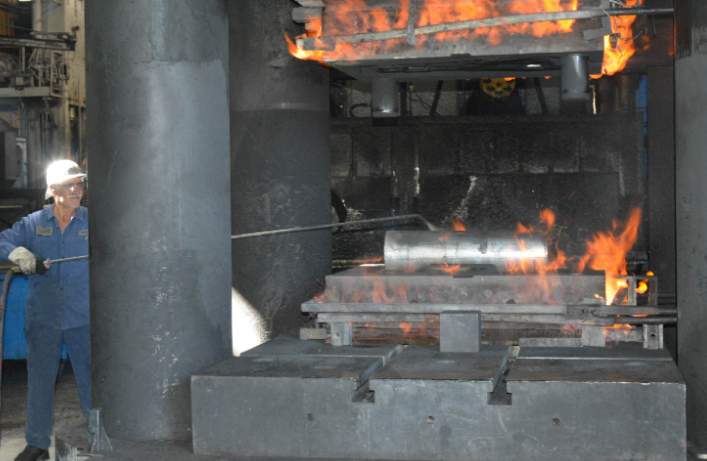
What is Closed-Die Forging?
The Closed-Die Forging also referred to as impression die forging, is a metal forming process in which a workpiece that has been previously heated to a high temperature is pressed by means of countermoving form tools (forging dies). The heated raw material which is approximately the shape or size of the final forged part is placed in the bottom die.
This metal forming process is able to produce the most desired shapes and more importantly offers the toughness and strength to products is being widely used for all industries including aerospace, power generation, defense, oil and gas, construction and engineering. Closed die forging is the most widely used forging method. The high temperature during hot forging enables the highest possible level of material deformation and the access to complex 3D geometries.
The Process of Closed-Die Forging
Closed die forging is operated under two tooling dies which are a stationary die (anvil) and a moving die (hammer). Both dies contain an impression of the desired part shape. The moving die presses down onto the stationary die and the metal workpiece causes the metal to flow into every part of the die and take its shape.
Usually, closed-die forging requires that the workpiece be moved through a series of impression cavities, at first forming the rough shape, then proceeding until a finisher cavity turns out the final product. The closed-die forging can be done with hot forging, cold forging or warm forging. In hot forging, the metal is heated to high temperature then formed. In cold forging, the metal is not directly heated but formed using high pressure. In warm forging, the metal is heated to a range that is relatively above room temperature but below re-crystallization temperature of the metal.
Advantages of Closed-Die Forging
- Closed-die forging leads to higher product strength and toughness.
- In Closed-die forging process there is no material limitation, whether it is steel, brass or aluminum, all can be used in this process.
- Closed-die forging provides much better surface finish due to precise shaping.
- Closed-die forging is a cleaner and greener process when compared to other processes of metal forming.
Disadvantages of Closed-Die Forging
- The process is relatively expensive as it involves higher tooling costs.
- The process has dimension limitation because complex products with irregular shapes may not be possible to be formed through closed-die forging.
- It also has product-size limitation, in the sense that larger products may not be produced through this process. They will obviously require other techniques.
Also Read: Difference Between Forging And Casting
What is Open-Die Forging?
Open-die forging process involves deforming a piece of metal between multiple dies that do not completely enclose the material. The material is altered as the dies hammer or stamp the material through a series of movements until the desired shape is achieved. In many cases products formed through this type of forging requires secondary resurfacing or machining to achieve the desired specifications.
While steel and related alloys are the most common subjects for open die forging, other metals that can be shaped in this manner include copper, nickel and titanium alloys.
The Process of Open-Die Forging
The process of Open-Die Forging involves the following steps:
- The raw material is cut into smaller parts if needed.
- The raw material is heated to reach the required forging temperature, usually the forging temperature depends on the type of material used (the use of heat is usually necessary in order to make the material ductile and malleable).
- The heated metal is shaped into required form by applying compressive pressure. The compressive pressure is imposed by continuous strike of forging hammer to deform the metal billets.
- The molded part undergoes secondary surface finishing or machining and heat treatment.
Advantages of Open-Die Forging
- The process increases the strength and toughness of the product.
- It is economical for mass production of metal products.
- There is no limit to the amount of material that can be formed through open-die forging.
- Different dimensions of tighter tolerances and net shapes can be achieved.
- Less material wastage.
Disadvantages of Open-Die Forging
- It is not very economical for production of small quantities of material.
- It is not capable of forming close tolerant and higher precision parts.
- Secondary machining is often required to achieve desired dimensions.
Also Read: Difference Between Hot working And Cold Working Process